This is the third part of a three-part article. Part 1 is here while Part 2 is here. I originally published it on Sept. 25, 2007 at The Valve. A lot has changed since then.
The Photographs
However inadequate photographs may be as documents for presenting graffs, they’re the documents I’ve got. All photographs are tricky beasts. Thus its no surprise that these photos of graffs present the standard challenges of medium and intention.
The most basic problem I’ve had with these photographs is “fixing” the colors when rendering them with the computer – I use Photoshop. The obvious choice, of course, is to get the colors to look like they were when you were actually there. But that appearance is only a memory. The lighting conditions on the screen and in the room where you work or view the images are quite different from those on-site. I have attempted to keep these images more or less within range of what you could actually see at the site.
These images also present a specific temptation. When newly painted the colors of graffs tend to be bright and their surfaces smooth and shiny. But they age quickly; the surface becomes dull and the colors faded. It is quite easy to brighten the images of aged graffs in Photoshop, perhaps even to something like they appeared when new. But how can you tell? No doubt I have succumbed to that temptation here and there, but not too egregiously.
There is another issue, that of intention. These photographs document the work of other artists. Ideally I should take a “neutral” or “transparent” stance in composing and framing my shots so that one sees only what the artist intended, with minimal interpretive interference from the photographer, i.e. me. I have taken and prepared many photographs in this vein.
But not all of them, not by any means. These are not easel paintings, created as self-contained aesthetic objects. These pieces exist out in the world where what happens to them is beyond the control of the artists or of museum curators. Some of them may be conceived in the spirit of easel paintings, first developed in sketches and then executed on whatever surface is available. But some of them – I have no idea of the percentage – will have been improvised on the spot, where the artist is susceptible to the immediate context. However they were conceived, whatever the artist’s intentions, graffs exist outdoors in contexts where their appearance changes according to time of day, season of the year, and current weather conditions. Their surfaces will degrade, as I’ve already mentioned, and others will come along and write over the topmost layer of imagery.
These things are important, and I have attempted to document them. I have taken many photographs where I am interested in documenting the context in which these graffs exist. The more image area I devote to surrounding context, the more choice I must exercise in choosing that context and framing the graffs within it. As I do this I am inevitably imposing circumstances on the graffs that are arbitrary with respect to whatever intention the writer may have had. In choosing those circumstances I am interpreting those graffs; I am taking what the world presents to me and using my craftsmanship to create order and meaning.
For example, when I photographed that rock-form AIDS graff (Figure 2) through the trees, I was interpreting the graff. To be sure, I did not create the trees, or the lighting, much less manipulate the graff itself. But I choose that particular shot, at that time of day, because I wanted to create a certain kind of image. I wanted to create the image of a mysterious structure hidden away in a lost world. Why did I want to create that image?
Because it casts the viewer in the role of an archaeologist investigating a strange but possibly quite wonderful civilization. That’s a useful perspective to take with you into the graff world. It reminds you that you are a stranger here, but it also prompts you to attend carefully to what you see, for it may be your best evidence about the lives of the people who made the images.
In this case, that last is not true. The writers are alive, most of them, though not necessarily available. Still, I believe that we should attend to their work as though it were all we will ever know about them. For I believe that their art will, in time, become ancestral to new schools and styles that we cannot now imagine.
* * * * *
I keep my online photographs at Flickr, where my screen name is STC4blues. Flickr allows you to organize images into sets, and sets into collections. I’ve organized these images in three collections. The sets in the Sites collection are organized according to location, with one set for each different site. Each set in the Changes collection shows a single surface photographed at different times, with different graffs on it at thos times. The last collection, Categories, organizes set according to some analytic category. The graffs in these sets will not necessarily be at the same site, though in some cases they are.
The Sites
This satellite image from Google Earth shows the area I have been investigating:
That’s the Hudson River in the middle, with the route of the Holland Tunnel drawn on the river. You can see Washington Square Park in Greenwich Village new the right edge below the center. My graffiti sites are within the shaded area to the left. Note that these are not the only graffiti sites in Jersey City; there are others, but they aren't within easy walking distance of where I live and so I haven't investigated them.
Here is a closer look at that area:
Notice the diagonal green area in the middle-right of the image; that’s the edge of the Jersey Palisades. The land to the west (left) of that is roughly 80 to 100 feet above the lad to the east. I will say a bit about each area when I introduce the photos. All I want to do now is to associate names with areas on the map. The names are mind, but some of them are grounded in local usage. Starting from the west:
\BA – EC: Bergen Arches – Erie CutBR: Brunswick TracksCT: The Cut, but not the Erie Cut, though physically close to it.YD: The YardSK8: Skate ParkS: Chocolate Factory, SouthN: Chocolate Factory, NorthJC: Jersey-ColesHC: Holland Corridor
Pushpins:
Blue: Dickinson High School (up on the Heights overlooking downtown)Green: Apartment building where I liveRed: Toll booths for Holland Tunnel
I currently have 21 sets organized by site (14 when I originally prepared this document). I'’ve listed only some of them below, along with some comments about each and a photograph or two.
Graff Territory: This set of consists of images that span the entire area I’ve been investigating. I’ve linked every image in this set to an online map. To the left of each image you’ll find a block of material called “Additional information.” The first line in that block will contain a link that leads to a map. You can view the map as a line drawing, as a satellite image, or a hybrid of both.
Bergen Arches – Erie Cut: This is a big trench blasted through the Jersey Palisades early in the 20th century. It was built to hold four railroad lines. Three of them have since been ripped out, the fourth is broken and not used. The cut has been abandoned and allowed to grow over. Most of the graffiti is on the arches supporting the roads that cross over the cut. Some of the graffiti in this area is quite recent and changing. I’ve seen evidence that homeless people sleep under at least one of these arches.
Brunswick Tracks: This is where I started photographing graffiti. One railroad line runs through this area, and it is still active. If you are on-site for more than an hour or so during the week you will see at least one freight train. They seem to be less frequent on weekends.
Most of the graffiti at this site is painted at the base of large columns and stanchions supporting Interstate 78 as it feeds into the Holland Tunnel. When I first walked the site I felt like I was in some ancient temple, with sacred art on its massive columns. The site is quite active, with changes weekly, some minor, but some major. Homeless men live here.
All the photos in Colonnade at the Brunswick Tracks were taken at that site. I framed them to emphasize the appearance of those rows of support columns.
The Cut: This is the northern end of the Brunswick Tracks area. The railroad line goes into the Bergen Tunnel at the western end of this site. The Bergen Tunnel is immediately to the Northeast of the Erie Cut. There is a cliff at the northwest sector of this site that supports roadways going down into the Holland Tunnel. Here’s a view down into the cut from a ledge beneath those roadways:
This is a shot looking out of the Bergen Tunnel:
The Shrine of the Triceratops is my name for a single piece in the Cut. This green triceratops is on the stanchion of an abandoned single track railroad bridge that goes over the track coming from the tunnel. It is about seven feet high and 18 feet wide and is one of the most striking graffs at these sites (I’'ve discussed it here). The name inside the triceratops is “Joe,” leading a number of knowledgeable people to assert that it was done by Jersey Joe – it is, after all, in New Jersey. Stylistically, however, it appears to be by Japan Joe.
Addendum: 26 Sept. 2014. The triceratops was degraded by the weather and painted over a couple of years ago. There's been a lot of construction in the area and I've not been back there in over two years.
Addendum: 26 Sept. 2014. The triceratops was degraded by the weather and painted over a couple of years ago. There's been a lot of construction in the area and I've not been back there in over two years.
The Yard: This site is beneath and between the ramps handling in-bound and out-bound traffic for the Holland Tunnel, which is about a quarter of a mile away. It is currently serving as a staging area for construction work being done on those ramps and roads. Graffiti in this area is on the stanchions supporting the ramps, but also on the construction equipment, such as cherry pickers and trailers, and on the ironwork supporting the highways.
This site is behind a building that is slated to become a graffiti museum. Again, construction has kept me from surveying the area in several years.
This site is behind a building that is slated to become a graffiti museum. Again, construction has kept me from surveying the area in several years.
Skate Park: This site is the remains of a demolished building that is beneath Hoboken Avenue as it goes up the side of the Palisades. This may currently be the most active site in the area. It has been appropriated by youths interested in skateboarding and stunt bicycling. They’ve built ramps and other obstacles at the site, most recently using concrete. At the same time, graffiti writers paint on the walls, with new pieces going up fairly frequently in the past two months.
This site has been destroyed a s preparation to construction that has not, so far taken place.
That close-up of one of the pieces (the green was obviously added after the original was finished) shows a sticker with a URL. If you go to that URL you find this YouTube video, which shows people doing bike stunts at this site during the early summer:
Chocolate Factory, North: These graffs on what remains of a chocolate factory – at least, that’s what the locals tell me. The building was partially demolished, leaving most of the ground floor and the rear wall in place. As I write this, the final demolition of this building has been in progress for almost two months. The concrete and masonry is being ground into gravel on-site.
The next photo documents the act of taking a photograph, with the lens in the middle and the photographer’s head to the left. The piece is by Ewok.
This site has been destroyed a s preparation to construction that has not, so far taken place.
Chocolate Factory, South: These ruins are about 80 yards south of the chocolate factory. I do not know whether or not they are also part of the factory complex; but it is convenient to designate them with the same label as it is in approximately the same location.
This site has been destroyed a s preparation to construction that has not, so far taken place.
Jersey-Coles: Most of these graffs are on a block-long wall on a site that is 10 to 12 feet above street level. The block is elevated so that it could support railroad tracks above street level. The railroad tracks are gone, but a signal tower remains, along with an old railroad bridge.
Because they are elevated these piecescannot be seen from the street. As far as I can tell, most of the people who live in this neighborhood (Hamilton Park) do not even know they exist. These graffs will be destroyed when an apartment complex is built on the site; preliminary site preparation has begun.
I haven't been up here in years, but there doesn't appear to have been much action. Nor has the Lefrak organization built the apartment buildings they had planned.
Holland Tunnel Corridor: This site spans the largest area of any of the sites, but it has very few pieces and murals and the density of tags and throw-ups is low. This is where I found the Bull Durham wall. Most of the interesting graffs are on abandoned buildings; a block of them has been demolished since I photographed it.
I have taken the photographs of the Bull Durham wall and organized them into a separate set.
Many of these buildings have been destroyed, though the Bull Durham wall remains.
Fr8s: These graffs are painted on the sides of freight cars. I took the pictures either in The Cut or the Brunswick Tracks but these graffs go wherever the cars go.
Changes
Each of these sets shows photos of individual sites taken at different times with different graffs on the sites. Not that I have not attempted to organize all such changes in my collection into these sets. With one exception, there’s no particular reason I choose to highlight these changes.
That exception is the set, Somer and the Showdown at Graffiti Gulch. This set documents a graff war between one Somer and writers unknown. The war took place over several months on adjacent stanchions at the Brunswick Tracks. Somer also has throwies and tags scattered about in the Holland Tunnel corridor.
Analytic Categories
There are lots of ways to think about graffs. These are just some obvious grouping that emerged in the course of working with these photos. I am not attempting to be systematic or complete about this.
Simple Graffiti: Tags and throw-ups from here and there.
X Pattern: All of these pieces are symmetrical about the vertical axis, as is an “X,” and most of them are symmetrical about the horizontal axis as well. Since few names have letter forms that are naturally like this, the form is forcefully imposed on the name.
Crazy Organic: The general idea is that these graffs are the “opposite” of X pattern. They aren’t symmetrical around either the horizontal or the vertical axis. The letters may be of very different sizes, they may be twisted and distorted in extreme ways, and have various arrows, extensions and visual “bits” added to them.
Characters: Back in the 70s writers started adding characters to their pieces, often taken from cartoon strips. For example, the (now-deceased) writer known as Dondi took his name from the cartoon character that appeared in many of his piece. All the graffs in this set have some kind of character in them.
Individual writers: Ceaze and Gaser frequently write together and have similar styles. Their letters are horizontally aligned and of approximately equal height. The degree of elaboration varies greatly, from simple block letters to highly elaborated “wild style” letters that are almost unreadable.
Both Japan Joe and Jersey Joe are both named “Joe” and write in New Jersey, though they write elsewhere too. They may even be the same person, though their styles are quite different. Jersey Joe is well-known, with a national if not international reputation and his own website. As far as I can tell, a writer named Faro (see comment by devbeep) is the only one who’s heard of Japan Joe, and I only have his word through hearsay in a comment on a photo at Flickr.
Memorials: Graffiti in memory of someone who has died.
Indiana SLuGS and the Journey to Nowhere in Particular: These photos document a site visit I took with a writer named PLASMA SLuGS. I’ve written about this trip in Journey to 3Tops: Indiana SLuGS and the Land that Time Forgot.
Subsequent to this trip PLASMA SLuGS has been back in Jersey City, getting up in the Brunswick Tracks and Bergen Arches areas. I have organized photos of some these graffs into a separate set.

Learning More About Graffiti
In the summer of 2006 New York Magazine published an oral history of New York City graffiti along with some photos: “Graffiti in Its Own Words.” It’s online, so start here.
More generally, the web is loaded with graff material, lots of it provided by writers themselves. Start with Art Crimes and work your way from there. The site has photographs from around the world along with articles, interviews, bibliographies, and links. The Wikipedia articles are useful as well, the main one and the one on terminology. Graffiti Archeology is devoted to tracking individual sites as the graffs change over time.
When you begin to crave hard copy, start with Jon Naar, The Birth of Graffiti (2007) and with Martha Cooper and Henry Chalfant, Subway Art (1984). Naar was the one of the first professional photographers to document graffiti, perhaps the first. He took these photos in 1973 and published 39 of them in The Faith of Graffiti (1974), with a preface by Norman Mailer. Birth republishes those plus dozens more. These photographs are particularly important because they document the emergence of piecing from tagging and throwies. Subway Art is about the “golden age” of graffs in the subways of New York City: great photographs, of the graffs and the writers, good quotes, a glossary, all the basics. While you’re at it, get the documentary that Chalfant and Tony Silver directed in 1983, Style Wars. It shows writers in action, in the yards, at home, looking though photos of their work. Then check out Wild Style (1982), a film directed by Charlie Arhearn and starring graff legends Lee Quinones and Lady Pink, among others. I’ve read that this film is what took hip hop to Japan.
The Art of Getting Over: Graffiti at the Millennium (1999) by Stephen Powers (aka Espo), documents the early Philadelphia scene and traces graff to freight monikers. All City: The Book About Taking Space (2003), by Paul 107, has extensive interviews with old school writers, and practical how-to advice on paints, caps, and can technique. Like many books on graffiti this one contains a disclaimer on the back of the title page explaining that graff writing is illegal and that this book does not encourage anyone to put marks on any walls.
Nicholas Ganz’s Graffiti World: Street Art from Five Continents (2006) is about taking it off the street and into the galleries, or, at least, treating the streets as galleries. Ganz is particularly interested in cross-breeding between graffs and other art styles, including photo-realism, surrealism, abstraction, and the use of paints other than aerosols. He calls it “the post-graffiti” movement.
Steve Grody’s Graffiti L. A.: Street Styles and Art (2007) has lots of pictures, plus a DVD with more pictures and with some interviews. The bulk of the text consists of quotes from writers. The material on technique and aesthetics is outstanding; the material on graff society and ethics is also quite good.
RackGaki (2007), by Ryo Sanada and Suridh Hassan, is devoted to Japanese graffiti. To a first approximation they look pretty much like graffs everywhere else, including the use of Roman letters; the basic graff style is that strong. But one also finds, as you would expect, characters and imagery from Japanese traditions and kanji writing. The accompanying DVD shows writers at work and includes interviews with them (subtitled in English).
* * * * *
There is a great deal of graff material in web videos. I have made no attempt to explore these videos in detail. Here are a few that I’ve found on YouTube:
Graffiti aesthetics a la Cycle: a TV interview with a writer.
Strange Attractions: Internet Replaces the Freight Train: a cop talks about how writers meet one another.
Host18, Taboo (DYM) Bombing 11 Spring St.: These writers are based in Brooklyn and have written in Jersey City. Note: "Bombing" is a term of art that has nothing to do with explosives. It's basically a full-out graff raid on some location or neighborhood.
Madvillain "Monkey Suite" x Faro x Knox x MF DOOM x Madlib: Faro – the one who does the mummies – has a number of graffs in Jersey City.
MERES interview at 5 Pointz Queens New York from Open Air: As the manager of the 5 Pointz “graffatorium” (my word), Meres is at the center of the graff world.
Acknowledgements: First I would like to thank Susan Farrell, of Art Crimes, for her advice, commentary, and encouragement since I began this research late last October. Bruce Jackson and Ellen Esrock have listened to me talk about this stuff and have responded in useful ways. I'd like to give a special shout out to Plasma Slugs and Layla for joining me in afternoon of adventure and exploration. Finally, Problems, Love is Kind, devdeep, and others posting to Flickr have made useful comments.
* * * * *
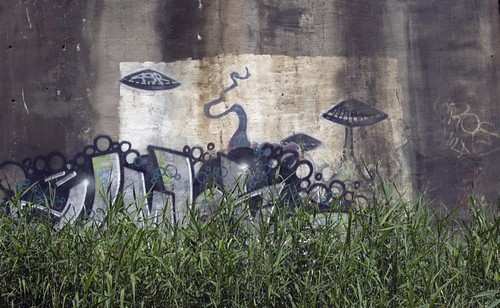
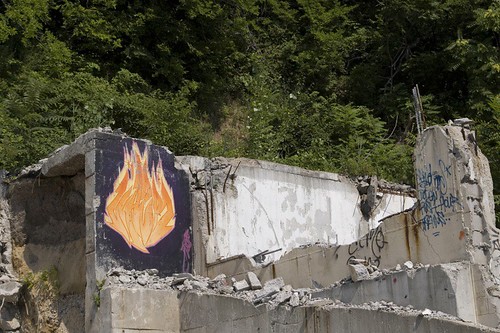
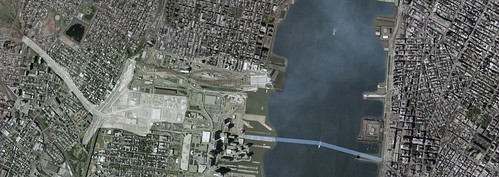
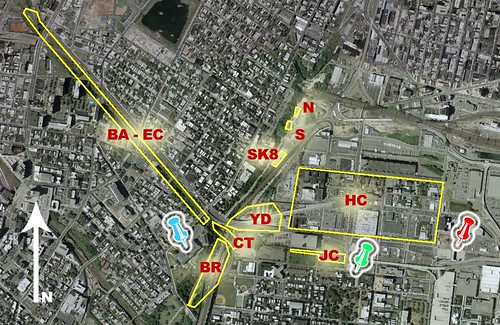
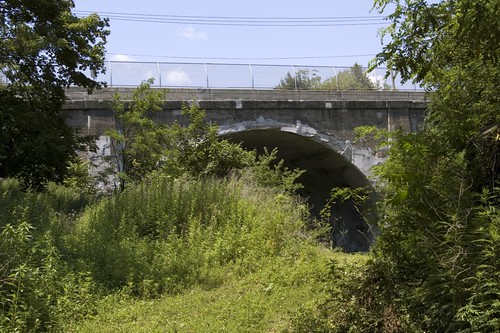
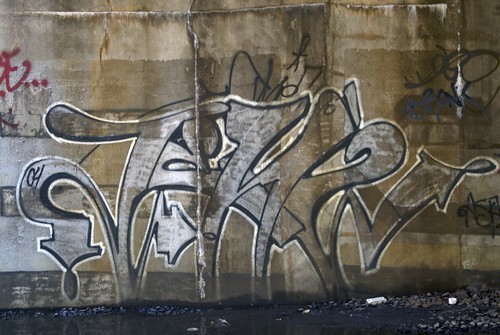
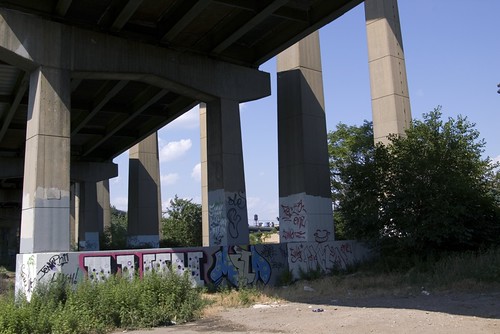
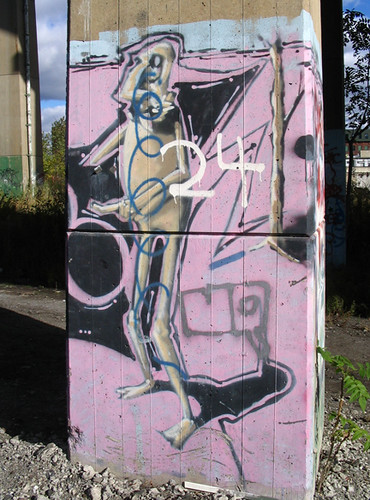
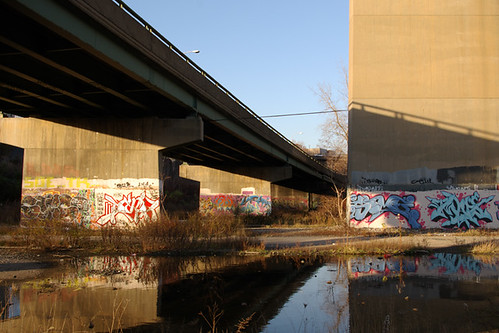
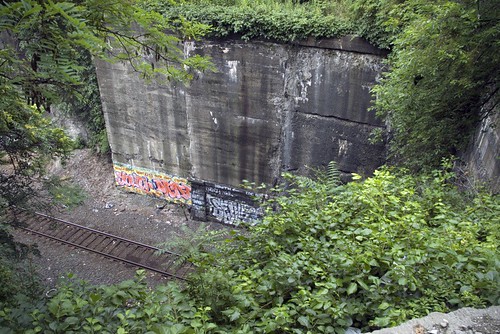
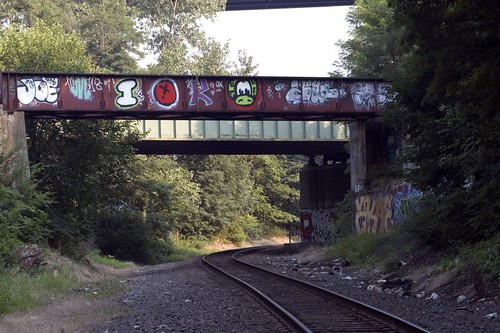
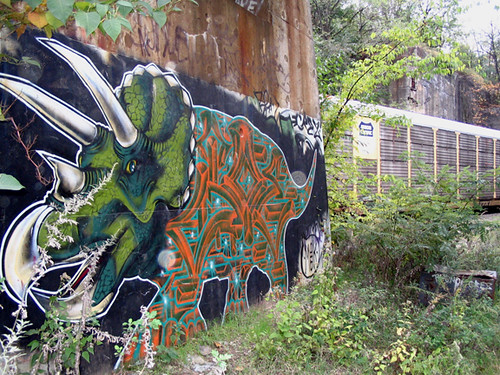
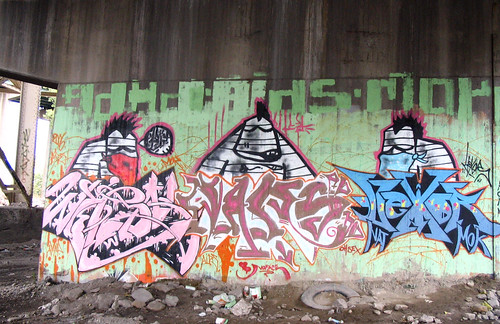
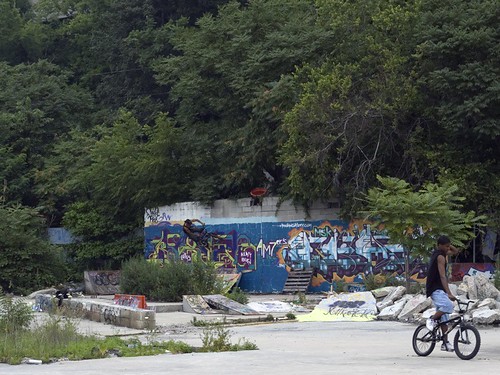
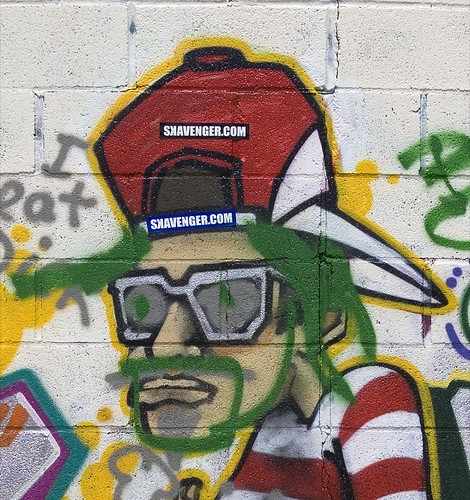
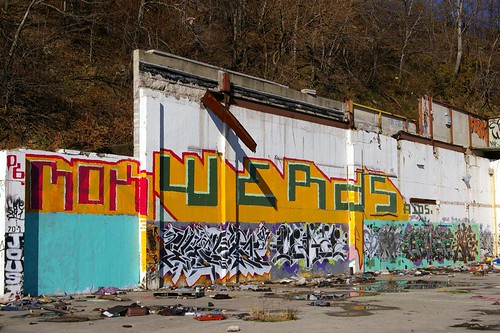

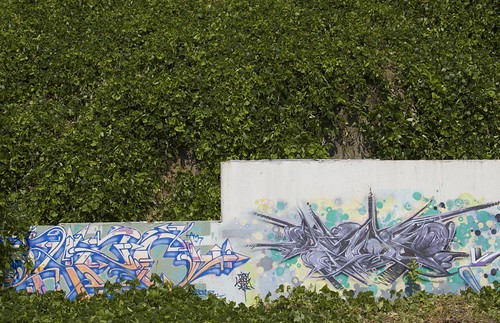
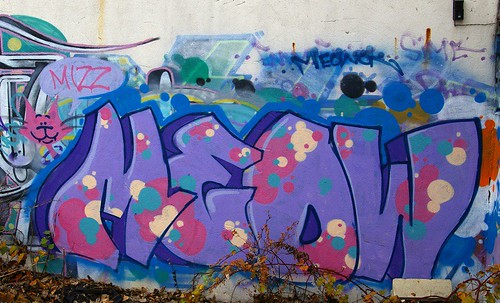
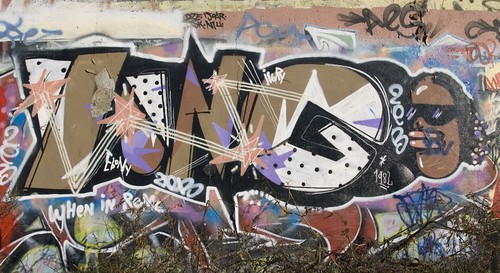
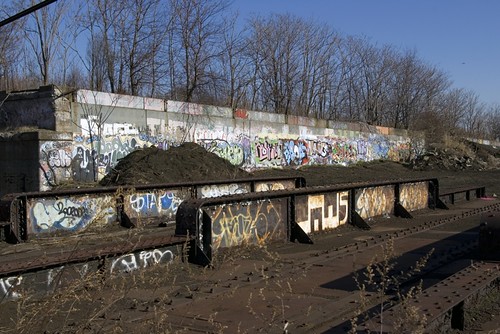

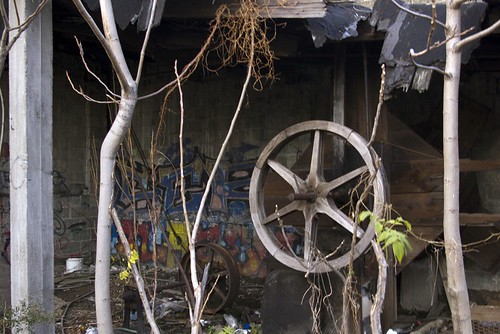
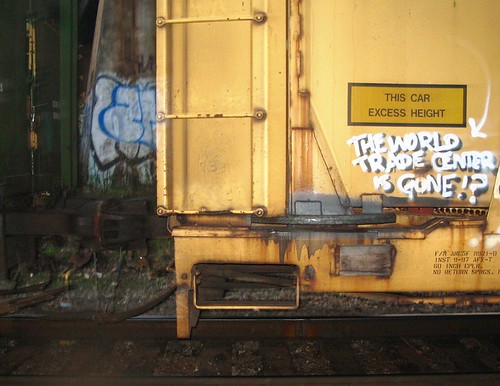
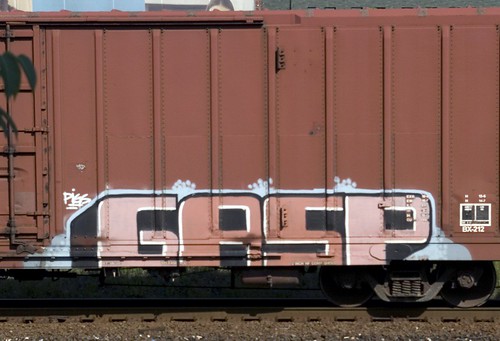
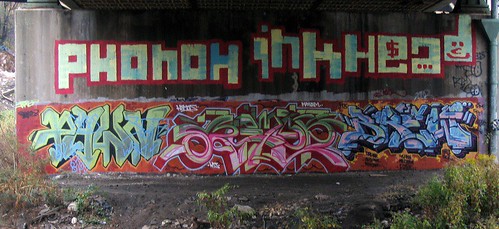
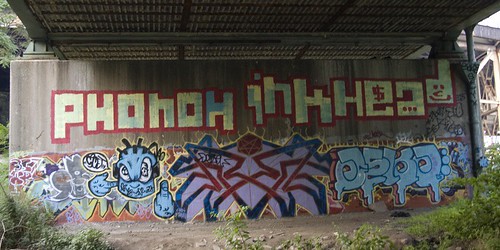
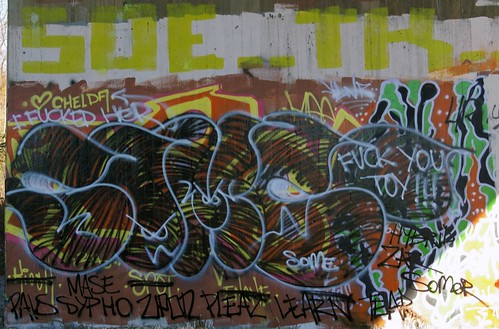
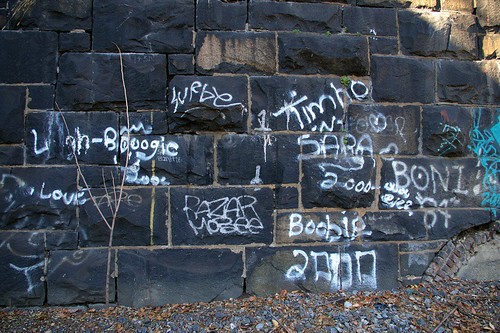
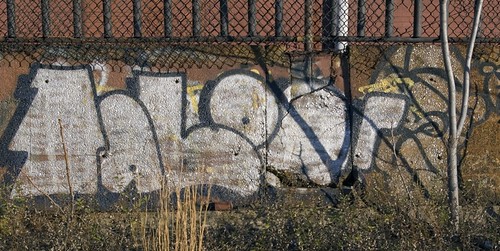
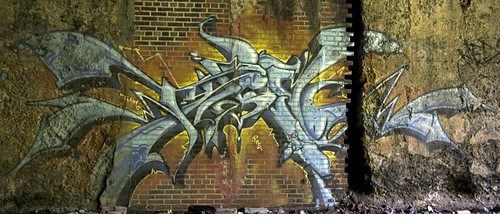
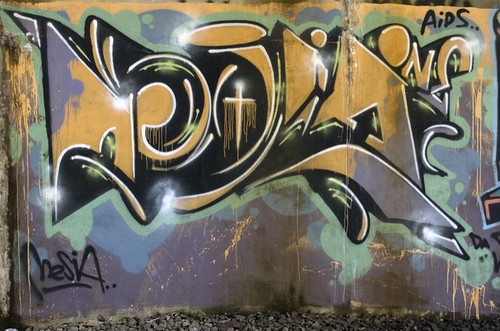
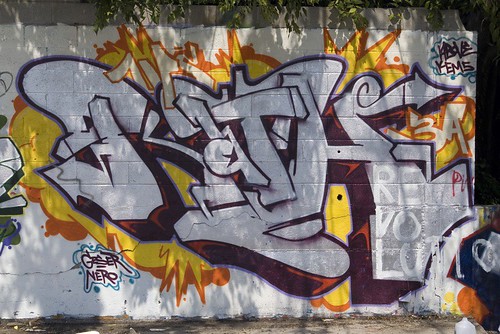
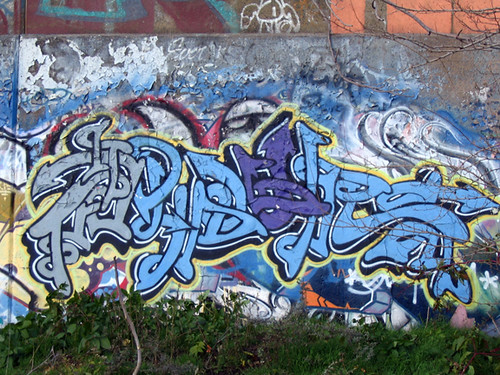
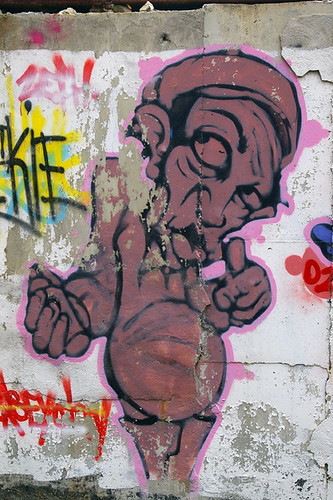
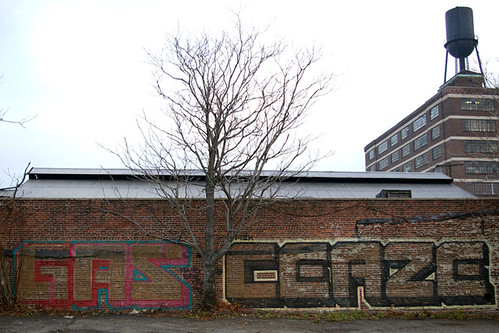
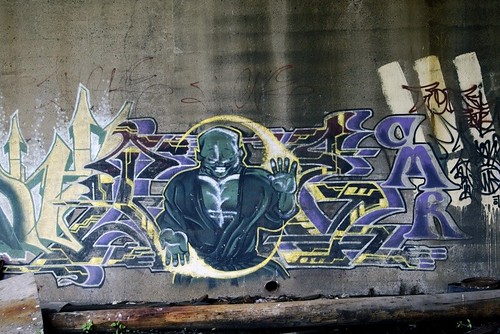
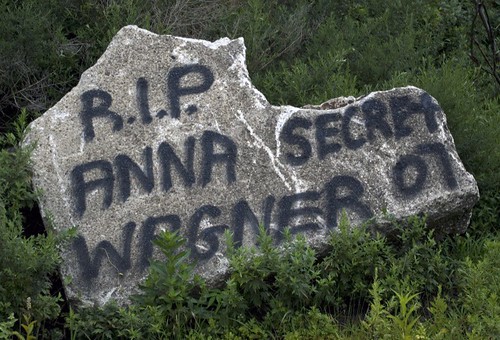
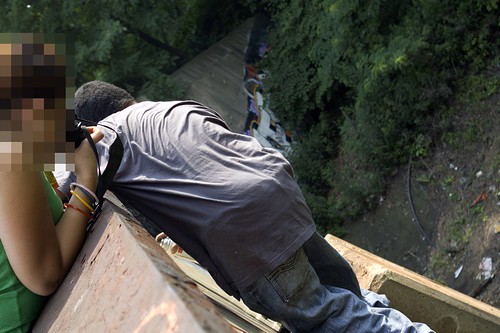
No comments:
Post a Comment